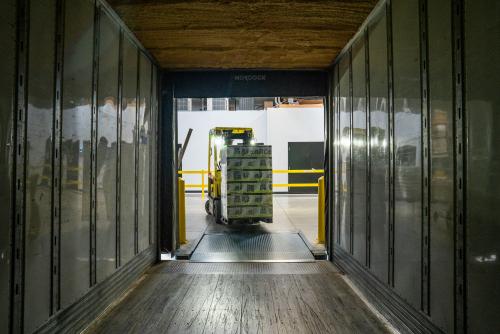Best practices for a successful Drupal 10 migration and challenges
 Drupal 10 is the latest open-source content management system (CMS) version that powers many websites and applications. It offers many improvements and new features, such as a modern and accessible user interface, enhanced performance and security, and support for emerging technologies. However, migrating to Drupal 10 from older versions of Drupal can be complex and challenging, requiring careful planning and execution.
Drupal 10 is the latest open-source content management system (CMS) version that powers many websites and applications. It offers many improvements and new features, such as a modern and accessible user interface, enhanced performance and security, and support for emerging technologies. However, migrating to Drupal 10 from older versions of Drupal can be complex and challenging, requiring careful planning and execution. In this article, I will discuss some of the steps to consider when migrating to Drupal 10 and the challenges that companies can face in migration.
Steps For Migration To Drupal 10
The migration from Drupal 7 to 9 involved moving all the data to a new Drupal 9 site. The migration from Drupal 9 to 10 is more like the upgrade from Drupal 8 to 9 and will not likely be a considerable challenge.
However, you can take specific steps to prepare the website for migration. Some of them can help you design the Drupal 9 site for the migration are:
• Check Drupal version: Developers must ensure they have Drupal 9.4.4 or later. With the earlier version of Drupal 9, It's impossible to use the data upgrade path from CKEditor 4 to CKEditor 5, as the core updates before 9.4 are no longer available.
• Use Rector: Developers should use Drupal Rector to scan and update the custom modules and themes. Drupal Rector detects deprecated functions in the code and helps replace them with the latest ones.
• Switch to CKEditor: Developers should switch to CKEditor 5 since CKEditor 4 will not be supported after 2023. Developers should follow Drupal's step-by-step guide for changing to CKEditor 5 to keep the site current.
• Verify PHP version: Developers need to Verify the PHP version. Drupal 10 requires PHP 8.1 or higher; developers must change the PHP code. Developers should log in to the hosting account and check the control panel settings to check the PHP version.
• Review modules and themes: Developers should review the modules and themes. Some modules and themes from Drupal 9 may not work with Drupal 10. If the site uses a module or theme removed from Drupal core, developers should install the contributed version before moving to Drupal 10.
• Site testing: Once the move to Drupal 10 is complete, developers should test the site using tools like Drupal Rector or PHPStan to run automated code tests. Manual testing can be done to ensure everything works as expected; forms, links, page navigation, and other site elements should be checked to find and resolve any user experience issues.
Challenges in Migrating To Drupal 10
Many companies want to use Drupal migration services and upgrade to Drupal 10. However, because they face some challenges and concerns related to the process, most companies hold back.
Some of the challenges in migration to Drupal 10 are:
• Compatibility: One of the main challenges that may deter you from upgrading to Drupal 10 is compatibility. The Drupal 9 site depends on specific themes and modules for its smooth operation and attractive design. Some of these themes and modules may not work well with Drupal 10. The website may lose some essential features and functions as companies upgrade to Drupal 10. It can have unwanted consequences, which can be avoided by following practical steps to overcome this challenge. This challenge can be mitigated by a company developing a Drupal business website, which can offer Drupal migration services and are aware of the compatibility issues companies can face when upgrading to Drupal 10.
• Resources: Drupal migration involves a lot of time and resources, which is one of the most significant issues that prevent companies from migrating to Drupal 10. The migration can result in website downtime, escalating the expense of using resources. This is one of the biggest reasons that dissuade companies from migrating to Drupal 10. One of the ways to overcome this challenge is to conduct a cost-benefit analysis. It can help companies balance the benefits of migrating to Drupal 10 with the resources they must spend. On deeper analysis, companies may find the equilibrium between resource allocation and gaining the benefits of Drupal 10, such as state-of-art security features, availability of tools such as CKEditor 5, and Claro and Olivero themes.
• Potential disruptions: Concerns about possible disruptions in site functionality are another issue companies face when planning to upgrade to Drupal 10. User experience is directly dependent on website functionality. It implies that any disruption in website functionality can lead to a poor user experience, loss of customers, and market reputation. To overcome this, one must conduct extensive testing before deploying the updated website. Detailed and comprehensive testing before deploying the updated website is the best way to prevent any disruptions in its functionality. It can help detect any potential issues impairing the site's performance and help resolve them beforehand.
Final Words
Drupal 10 is the most advanced and sophisticated version of Drupal CMS, and it can help businesses create a powerful and engaging website for their audience. Migrating to Drupal 10 is a strategic decision that can benefit your website and business. However, it also involves some challenges and concerns that must be considered and overcome. Following the best practices to overcome challenges, companies can migrate to Drupal 10 successfully and enjoy its unique features and advantages.






Comments